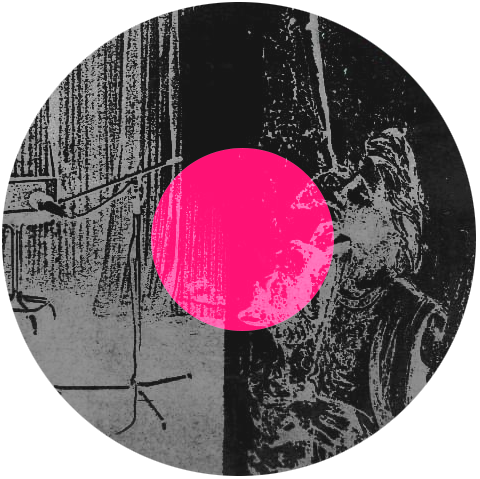24 Jul 2020
Tony Soprano's Secret
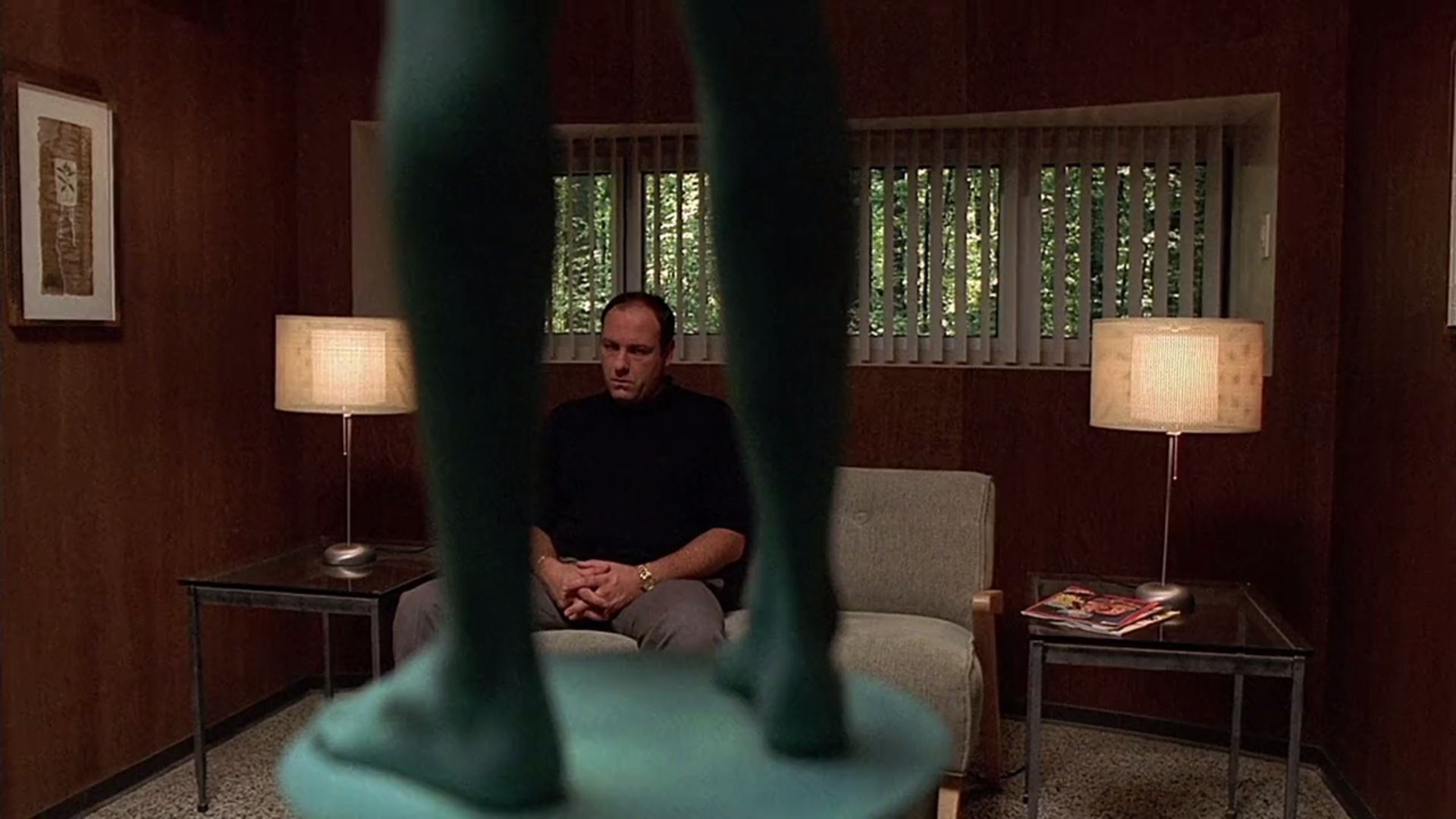
Warning: SPOILERS for many plotlines in The Sopranos from the very beginning, including the show’s finale.
Thirteen years after its original airing, the finale of The Sopranos remains one of the most captivating pop cultural events of at least the past thirty years: a bold and brilliant exit piece that – like all the best Pop – dared to turn the conventions of the televisual form against themselves in order to effect a cultural rupture and escape the constrictions of remaining “just” television.
The final scene is now notorious: the Sopranos family decide to meet at an American diner for dinner, with Tony arriving first and the others filtering in one by one. Tony puts “Don’t Stop Believin’” by Journey on the jukebox, just as his wife, Carmella, enters. His son AJ then arrives, behind a man in a grey jacket who decides to sit at the bar who, for the rest of the scene, is constantly glancing over his shoulder at the family. Meadow, the daughter, arrives late in her car but has difficulty parking; while this is occurring, the family discuss “enjoying the good times” over onion rings. Finally, the man in the grey jacket goes to the toilet, and Meadow races into the diner; as the bell on the door rings, Tony looks up, and the screen, famously, cuts to black. Ten seconds of nothing follow before the credits roll.
As could be predicted, such an ambiguous ending has been opportunistically seized on by lazy armchair commentators, who have been transparently seeking to maximise hits on their content in order to profit off of viewers’ confusion. Almost without exception, these commentators churn out tediously boring “interpretations” of the ending/show that, fresh out of the CSI School of Cultural Criticism, treat it as a Sunday newspaper crossword puzzle: there are a clear and distinct number of elements that come together in a certain way, thus completing the puzzle and eliminating ambiguity. The most glaring example of this is a 2018 YouTube video by a channel called The Take, which pedantically pores over every detail in the final scene to establish a range of patterns1 within it and season 6 (the most famous being Tony’s third-in-command Bobby saying of death earlier in season 6: “You probably don’t even hear it when it happens, right?”) to heavily imply that the “correct” interpretation of the ending is that Tony dies.
Against these tedious representationalist takes, akin to those of a high school English class, we should assert a more radical reading of the ending, which also happens to be the most bleedingly obvious: nothing happened to Tony Soprano. His life neither continued nor was ended; it was simply voided. Behind the finale’s famous cut to black is not an affirmative answer to the question of Tony’s fate, but rather the metaphysical fact that both Tony and his mother took to calling the “big nothing”. Post your interpretation of the finale in the comment boxes of the latest YouTube video or Reddit thread, but they’ll always skirt around that primary fact: nothing happened to Tony Soprano, no matter how much you will it otherwise.
*
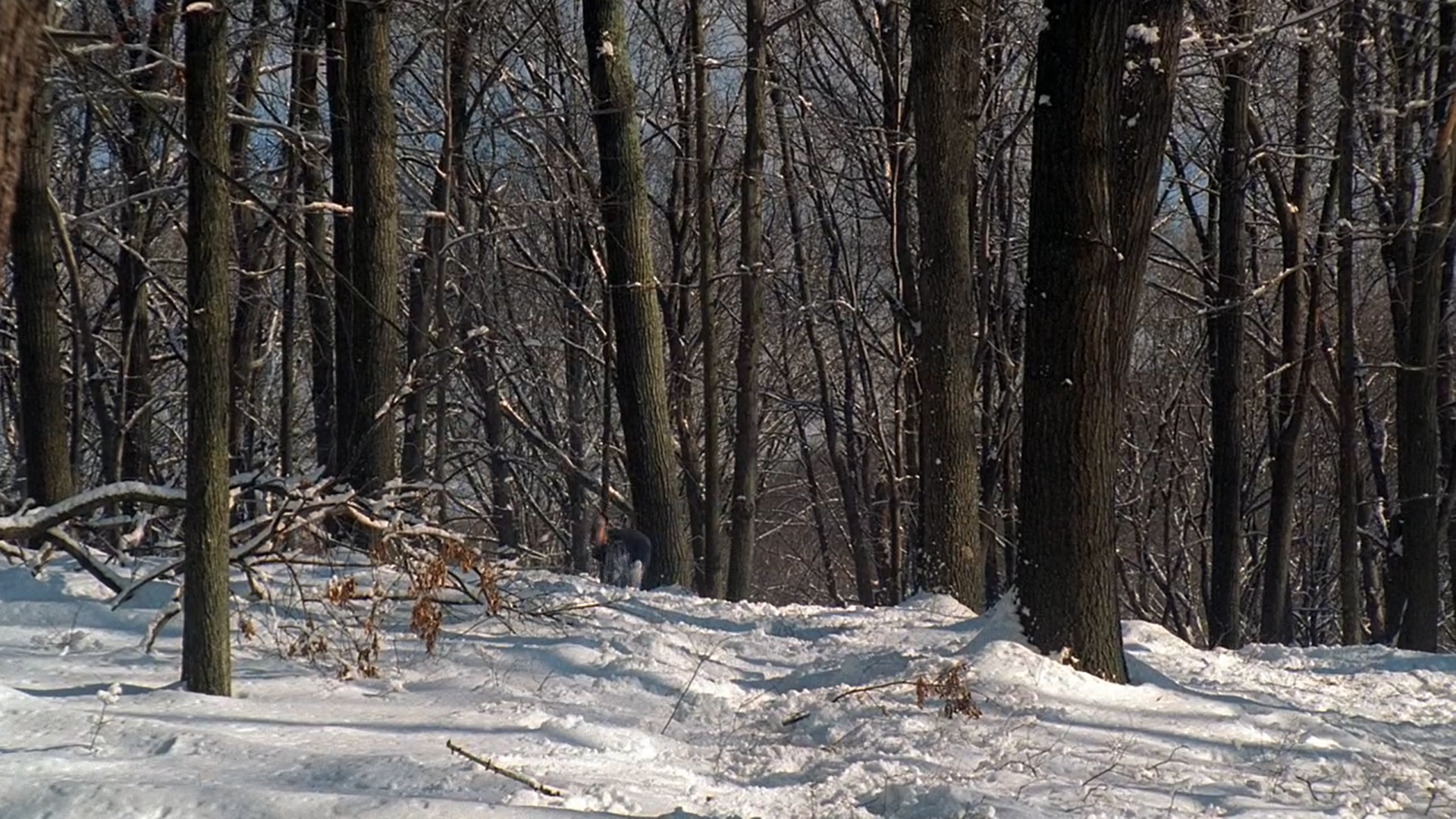
Really, we should have seen it coming. Looking back, The Sopranos was always a show obsessed with groundless signifiers, symbols which refused to be instrumentalised and tethered to a particular meaning. Reflecting on these almost makes the show’s ending appear trite and predictable: remember the Russian from “Pine Barrens” whose fate we never found out about? Remember the bird at the window at Cristopher’s initiation, which he took to be an omen? Remember the two Kevin Finnerty episodes while Tony was in a coma after being shot, that told the tale of a precision optics salesman identical to Tony, minus the Jersey accent, losing his briefcase and being stranded at a convention? What did this all mean? What happened? We don’t know, and it’s not clear the writers even know. Not even Tony knows; all that is left of his Kevin Finnerty experience is a visceral but indefinite spiritual impression, as he tells fellow mob boss Phil Leotardo in season 6’s “Kaisha”:
While I was in that coma, something happened to me. I went someplace… I think. But I know I never wanna go back there.
I went someplace… I think. Tony has touched the surface of this mysterious “someplace”, this murky other world that stalks behind the apparent obviousness of the realm of symbols and signification, but all he can access, by definition, are traces upon traces of it. Watch through the series and soon you begin to see it everywhere: the aging back office of Satriale’s Pork Store; the muddy underpasses where the rotting corpses were buried; the smoke and seedy clientele of the Bada Bing strip club; the dust of the construction sites; Tony’s absurd dreams; the lies the characters tell themselves; the eerie rustling of the leaves in the New Jersey forests; the blank stare of the naked statue outside Dr. Melfi’s office. Everything in The Sopranos – every symbol, every conversation, every character, every shot of the camera – seems to be hiding something. Nothing is what it “is”; everything is standing in for something else. In other words, everything in The Sopranos is keeping a secret.
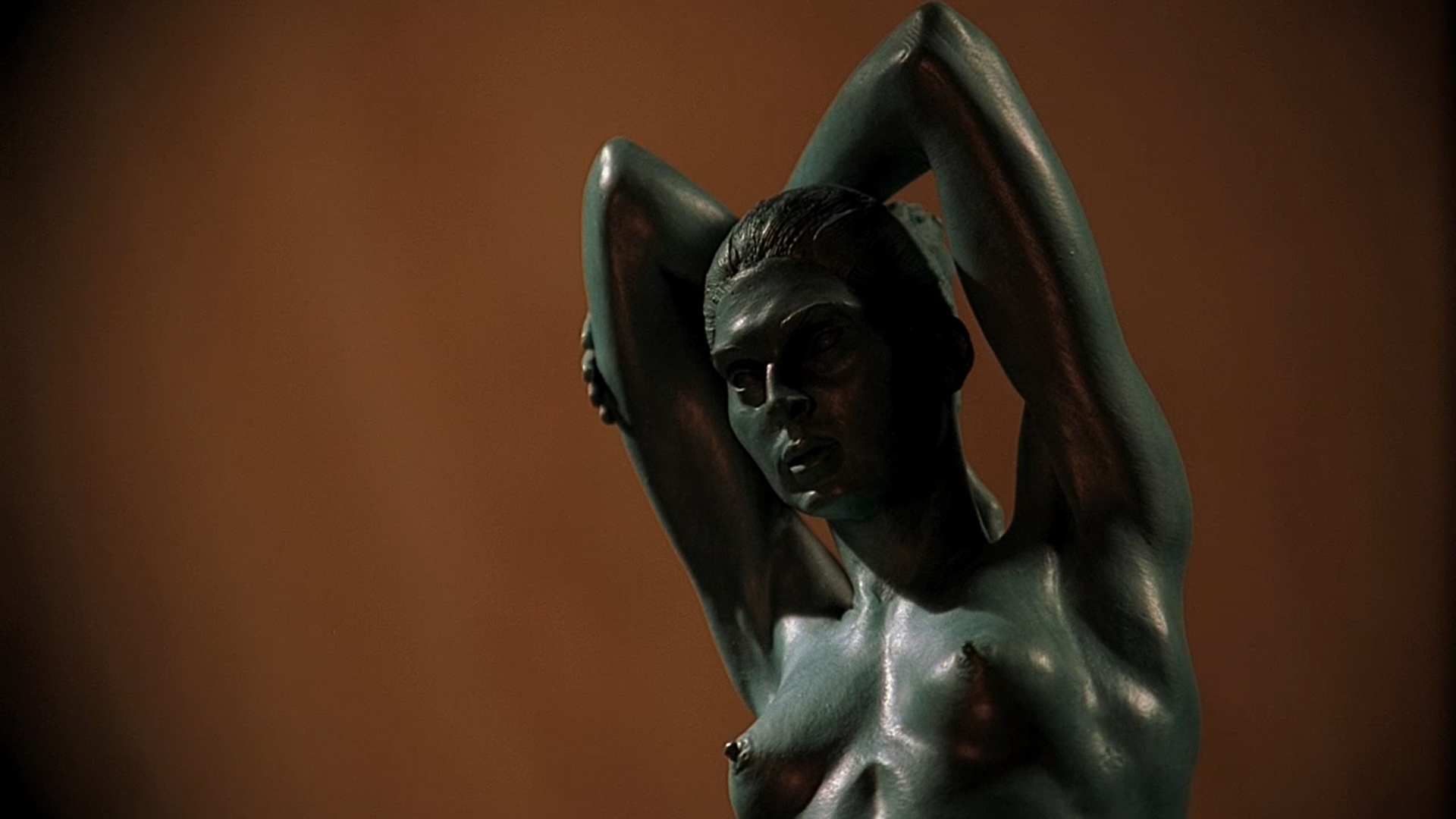
But what exactly is the secret? How are we to conceptualise and understand this murky, secret underworld that lurks behind The Sopranos’ realm of appearances? We know it is “there” – we feel it in those uncomfortable pangs we get when we are presented with a plotline that is not resolved or a mysterious symbol that does not make sense to us – and yet at the same time it is not positively present in the show: it is never shown on screen, and seems to exist both beyond and between the show’s structure of 86 hour-long episodes. How are we to make sense of this eerie entity?
There are many ways to approach this question, which essentially is a reiteration of the age-old philosophical problems regarding appearance vs. essence, phenomena vs. noumena, etc. Considering the heavy focus of the Dr. Melfi therapy sessions throughout The Sopranos, however, as well as the importance of dream sequences to the show, one is inclined to interpret the question psychoanalytically. The Sopranos, after all, is one of the few television programs that seems to possess its own unconscious: a level of being that cannot be reduced to simple screen appearances or the “hidden” intentions of the writers “behind the scenes”.
In analysing the show, therefore, our role becomes akin to that of Dr. Melfi working with Tony, and the riddle we are prompted to solve is precisely that of psychoanalysis: what is “the secret” of the unconscious? How is the unconscious an “eerie entity”?
*
In the pilot of The Sopranos, Tony famously has a panic attack when a family of ducks, who have been living in his pool and he has taken a shine to, leave the pool for good, leading him to begin psychoanalytic therapy with Dr. Melfi. Later on in the episode, in a session with her, discussing a dream Tony has where a duck flies off with his penis, the mysterious event – the secret of the unconscious – is cracked:
Melfi: What is it about those ducks that meant so much to you?
Tony: …I dunno, it was just a trip having those… wild creatures coming into my pool, and having their little babies… I was sad to see them go. [begins crying]
Melfi: When the ducks gave birth to those babies, they became a family.
Tony: …you’re right. That’s the link. A connection. I’m afraid I’m going to lose my family… like I lost the ducks. That’s what I’m full of dread about!
There was always something unsatisfying about this scene, something a little too neat, that thankfully the show never made the mistake of doing again. And it’s precisely the same mistake that videos like The Take’s above make when “cracking the code” of the show’s ambiguities and its ending: they posit something as “originary” which really can only be posited retroactively. Deleuze and Guattari make this critique of psychoanalysis in the first chapter of Anti-Oedipus: for them, the subject only emerges as a “mere residuum”, a leftover, after a more primary process of desiring-production has done its work2. As a leftover of this process, the subject then looks back retroactively at the desires at work and takes them to be her “own”, positing an “I” that existed before the desire “I want X”, when really the truth is the opposite: it is the “I” that emerges out of the more primary process of “wanting X”. Consequently, rather than a detached assessment of the truth of the unconscious’ workings, in Deleuze and Guattari’s schizoanalysis the reflective revelation of “That’s what I’m full of dread about!” is integrated as just another machinic component of the unconscious’ workings. It does not reflect on the process from afar – it is part of that very process. (They call it the “conjunctive synthesis”, the third and final of their three syntheses of the unconscious.)
The consequence of this is that we have to conceive the “secret” of the unconscious differently. It is no longer a box of positive contents that we can open and discover (“So that’s why I feel this way, it’s all to do with my family and upbringing…”); as Zizek notes in The Sublime Object of Ideology, this is a fetishistic approach which fetishizes the hidden “content” behind forms and appearances as the thing “actually” controlling things behind the scenes. (In the case of The Sopranos, this fetishistic approach is one that fetishes the minds of the writers as the show’s “hidden content” which reveals the “truth” of its many ambiguous appearances and plotlines.) We know from our own experiences that this does little to dispel or solve the “secret”: being told that the blank screen at the end of The Sopranos clearly tells us Tony is dead does nothing in dispelling the ending’s impact, wonder and magic. Explain it all you like, but something extra – the secret – still remains.
The reason being, as Zizek shows, that the secret lies elsewhere. Zizek draws on Marx and Freud to make this point, noting the homologous procedures of demystification operating in both their works. Marx opens Capital with an analysis of the commodity-form, seeking through his labour theory of value to pierce through the superficialities of bourgeois political economy and instead demonstrate the fundamental role of labour in producing value. Freud, meanwhile, most notably in The Interpretation of Dreams, seeks to do a similar thing with dreams, starting from the fundamental premise that dreams are not just meaningless junk leftover from the preceding day, but potential clues to the deeper workings of our psyche. Zizek summarises the homologous goals of these procedures as thus:
In both [Marx and Freud] the point is to avoid the properly fetishistic fascination of the ‘content’ supposedly hidden behind the form: the ‘secret’ to be unveiled through analysis is not the content hidden by the form (the form of commodities, the form of dreams) but, on the contrary, the ‘secret’ of this form itself. (p.3)
What does it mean to seek the “secret of the form”? In our case of The Sopranos, it means seeking the process that gives the latent content “behind” the show (the actual material processes of acting out the show, writing it, coming up with plotlines, etc.) its alluring form (the fictions and plotlines of the show that entice us, make us squirm in our seats or shout “no!” at the screen). How is it that, even though we rationally know TV dramas are “not real”, we act as if they are: we grow to love the characters as if they are real people, we judge the show’s plotlines as if they were occurring in our “real” world, we react to the violence on the screen as if it was not simulated? This was the secret that was exposed – but, critically, not solved – when The Sopranos presented us with all those groundless signifiers floating above an abyss of meaning (Kevin Finnerty, the bird, the black screen). By intermittently rupturing the show’s reality principle, and thereby discomforting its confused fans, the show was short-circuiting (and thereby revealing) an unconscious process that was allowing the brute realities of The Sopranos (it had actors, was filmed, scripted, etc.) to be transformed into a compelling drama. Instead of unprovable and uninteresting “theories” about whether Tony is dead or not, it is this strange unconscious process that we should be reflecting on in the wake of the show’s final scene.
As Zizek notes, however, this eerie feeling of discomfort, or the projection that there must be “more” to a show in the face of these meaningless signifiers, is not something that happens “inside” the subject or “her” unconscious: it is not an interior or merely “individual” illusion3. Instead, the abstraction4 at work when watching The Sopranos (which makes us treat the show as if it is real even though we know it is not) is irreducibly external and decentred5. Riffing off Sohn-Rethel’s remark that “the exchange abstraction is not thought, but it has the form of thought”, Zizek thus arrives at one of the possible definition of the unconscious:
the form of thought whose ontological status is not that of thought, that is to say, the form of thought external to the thought itself – in short, some Other Scene external to the thought whereby the form of the thought is already articulated in advance. The symbolic order is precisely such a formal order which supplements and/or disrupts the dual relationship of “external” factual reality and “internal” subjective experience. (p.13)
The unconscious here has transformed from the unsatisfying box filled with all the positive contents of familial/Oedipal drama we noted earlier (“I’m afraid I’m going to lose my family… That’s what I’m full of dread about!”) into an alien entity that is deeply “within” the subject (“more in the subject than the subject”, to use a memorable phrase of Zizek’s) and yet simultaneously radically external to it (a symbolic order that always comes “before” the subject’s conscious thoughts, taking the form of “thought external to the thought itself”)6. Scarier still, such an alien entity is necessary for our subjectivity. Without it, we would literally be nothing: unable to act, unable to believe, unable to enjoy television shows. Our very thoughts depend on a thinking machine external to thought itself.
Instead of opting for horror, though, The Sopranos always took this fact on the chin, plodding on good-natured irregardless. As any fan will know, the show was laced with a subtle dose of comedic farce from the get-go, with the characters frequently bemused and confused as to how they had ended up in the situations they were in, as if they were pawns in a baffling cosmic tragicomedy concocted by the gods. (The prime example of such farcical humour is of course season 3’s “Pine Barrens”.) In a different way, this lightness also found its way into the ending, which is famously soundtracked by Journey’s “Don’t Stop Believin’”. In light of the above, we can perhaps read the message of this song in relation to the finale optimistically: don’t stop believing – it may not be “you” believing, but without the believing “you” would be nothing. Instead of denying the process of belief as a muddying subjectivism that gets in the way of the cold hard facts, as a scientific scepticism is wont to do, embrace that it is the fact of our belief that gives us access to a cold, hard reality that is stranger than we could have ever imagined. And though that realm beyond the human can be puzzling and/or horrifying, without it we wouldn’t be here in the first place. It’s a message that, as creator David Chase has acknowledged, has “some hope in it”.
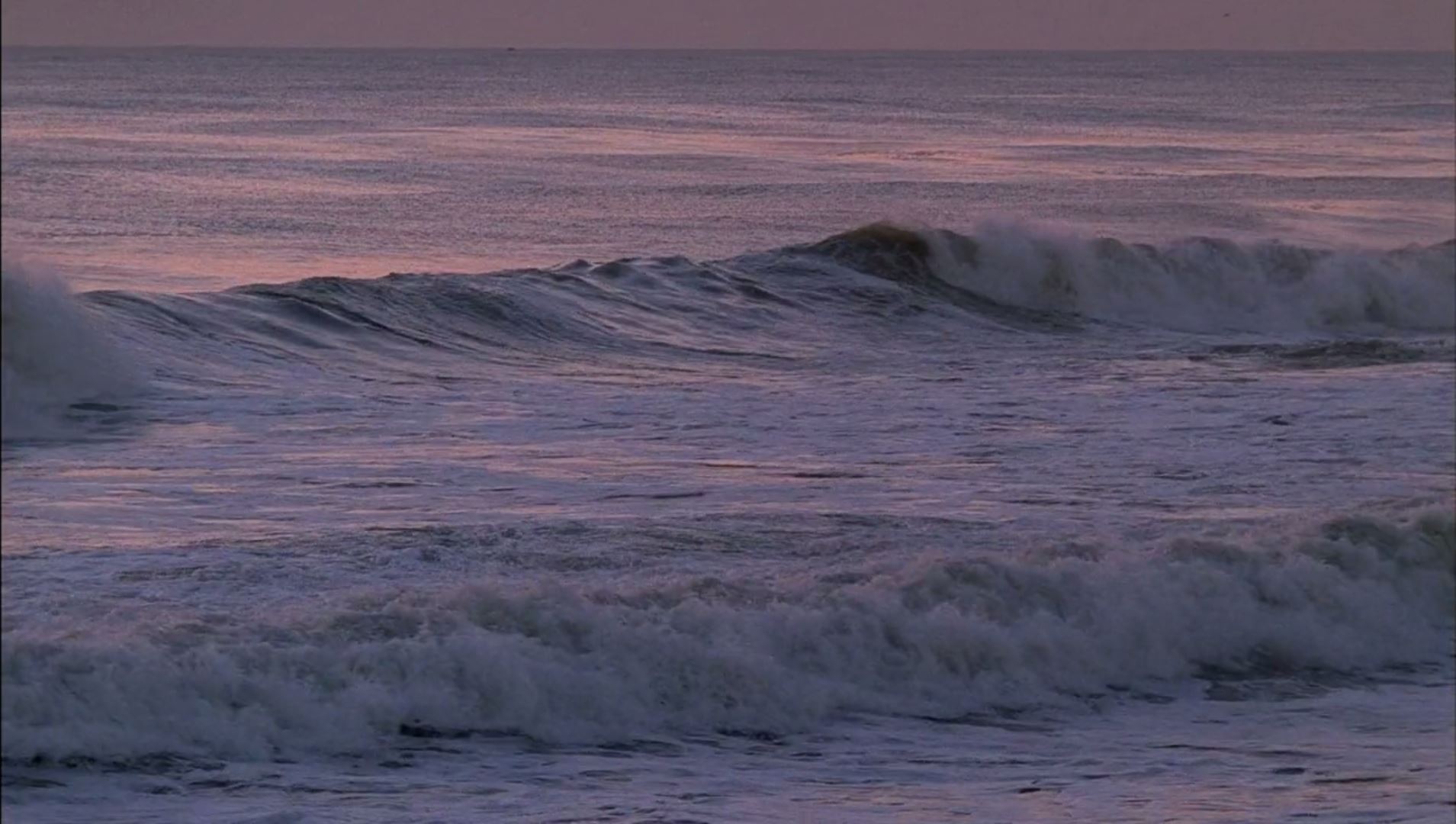
-
Other “clues” spotted by the video? The diner has an orange tiger painted on the wall, which apparently “symbolises death” (yes, this really is a GCSE English lesson) because of the morbid use of orange in The Godfather; and the organs in the opening track of the episode, “You Keep Me Hangin’ On” by Vanilla Fudge, are supposed to make us think of funerals. ↩
-
Anti-Oedipus, 1983, p.17 ↩
-
Otherwise, the “crossword puzzle” approach to The Sopranos would not be the dominant response to the show’s ambiguities. ↩
-
I’m very crudely and shamelessly appropriating this term here, which Zizek uses based off Sohn-Rethel’s work on the “real abstraction”, which is a key theoretical cornerstone to the first chapter of The Sublime Object. Strictly, following Sohn-Rethel, we should only be using “(real) abstraction” to refer to the abstraction at work when commodities are exchanged by people, where, for instance, a commodity is reduced to an abstract entity (rather than a unique, sensuous, concrete thing) that can be equated in value with another commodity, and thereby exchange. The way I see it though, the process here is similar enough to what goes on when watching a television show (while it is not reduced to a quantity, it is reduced/abstracted), so for the sake of shorthand, I have used “abstraction” here, despite the many pedantic Marxist complaints you could make about it. ↩
-
One need only take heed of Mark Fisher’s off-hand remark in The Weird and the Eerie on this: “the unconscious is not a subject”. (The Weird and the Eerie, 2017, Repeater Books, p.58.) ↩
-
For the more philosophically inclined/interested, it is worth noting the crossovers between psychoanalysis’ “alien” unconscious and Kant’s “transcendental I”, which is discussed very coherently in Anna Greenspan’s PhD thesis “Capitalism’s Transcendental Time Machine”, as part of the Ccru. In section 1.2 she discusses how Kant’s transcendental syntheses are what are necessary for the empirical Ego (self-consciousness) to emerge. I’m still getting to grips with this and am yet to read Kant, but I couldn’t help noting the intriguing crossovers here (which were in fact acknowledged by Freud himself in his essay The Unconscious). As an addendum, if you want something to help you get to grips with Kant, Greenspan’s thesis is very accessible and I’m enjoying it a lot. ↩
